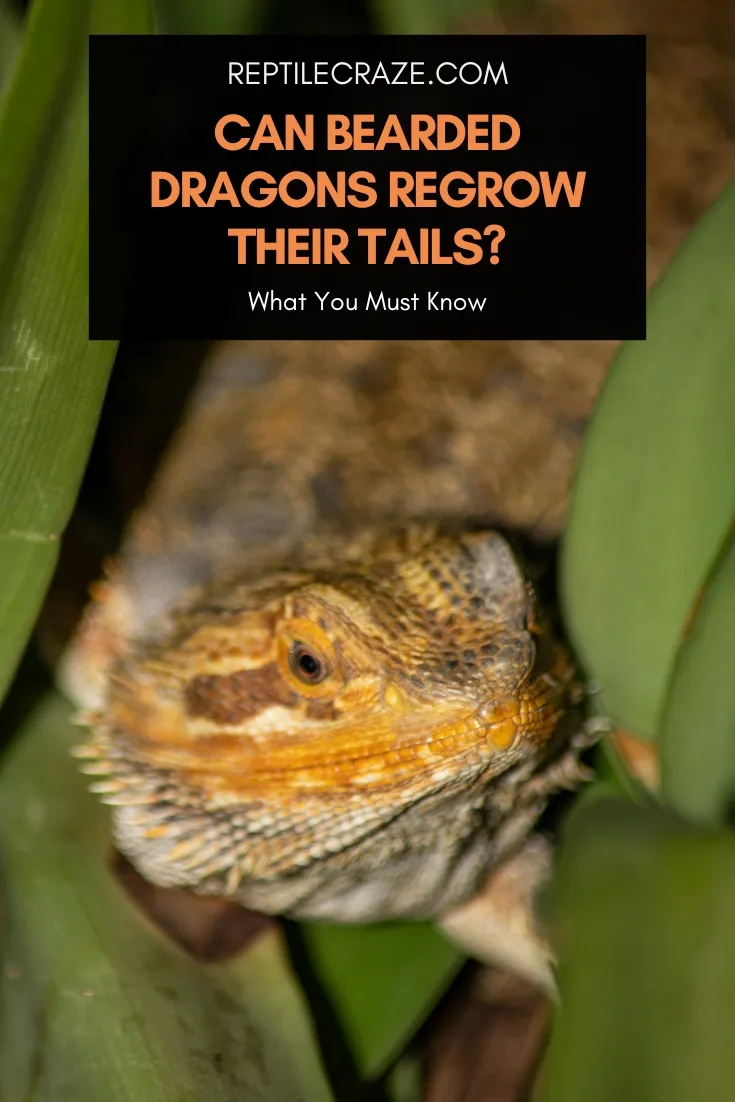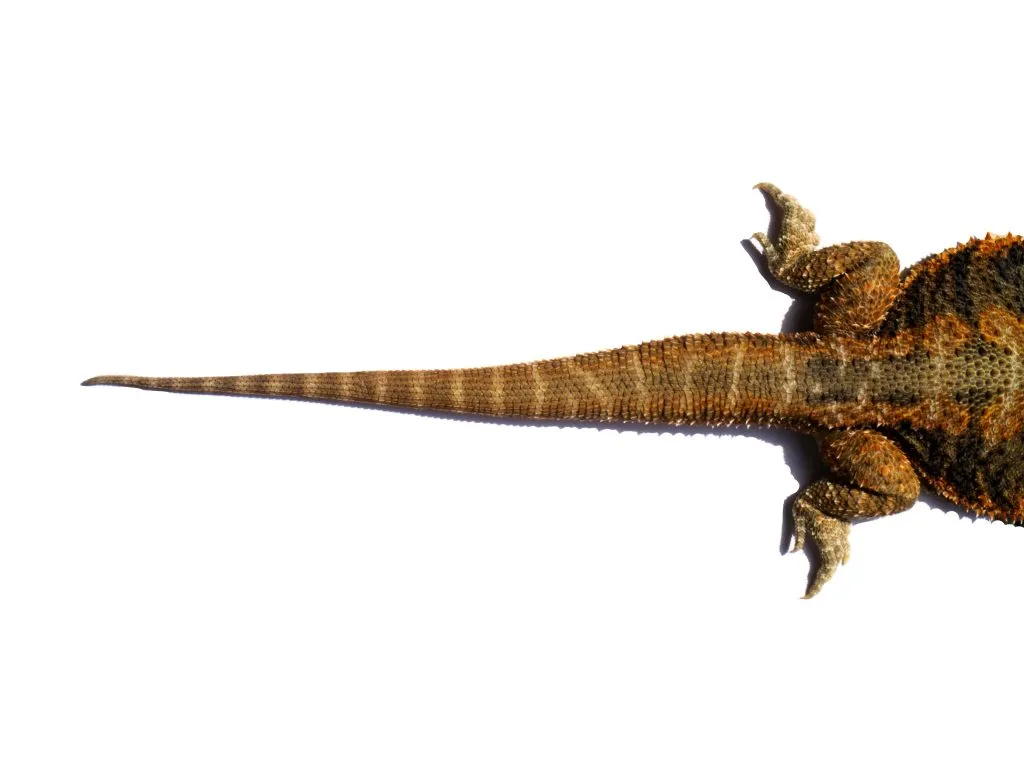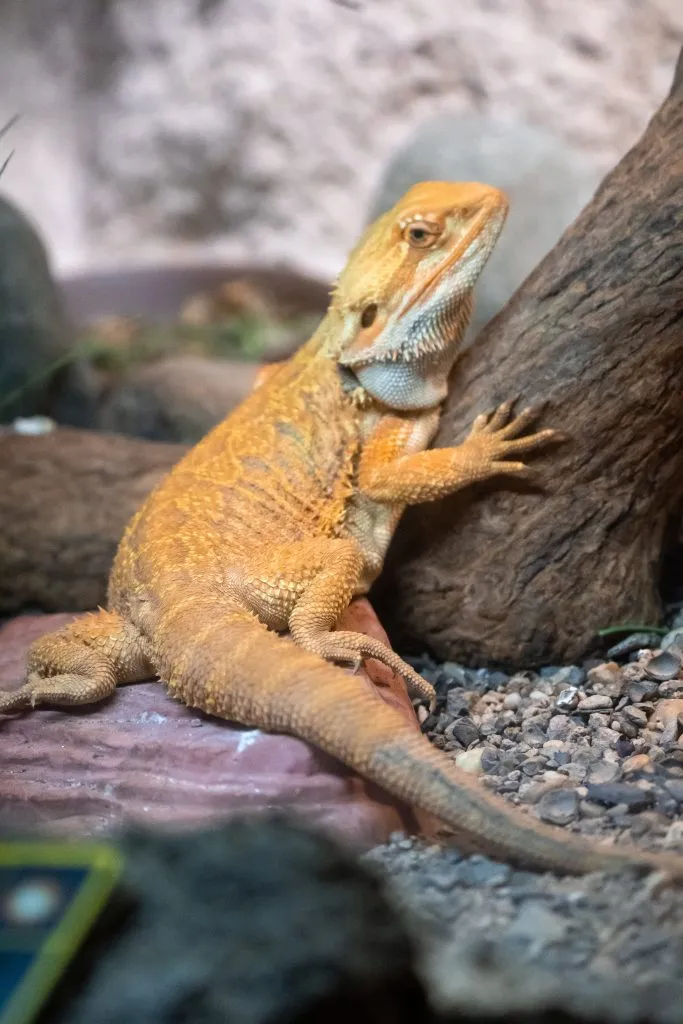
Aside from their spiked beard, bearded dragons are known for growing tails as long as their bodies. Like other lizards, their tails are valuable to them as they’re used for balance, communication, and defense.
But when beardies lose their tails for various reasons, can they still grow them back?
While many lizards are capable of regrowing their tails, bearded dragons are not. They don’t have the autotomy gene allowing them to regrow their tails. But, their tails can slightly get longer as reptiles continue growing their whole lives.
If you’re baffled at this fact, let this article explain to you why beardies can’t grow their tails back, if they can live without their tails, and what you can do when this happens.
Why Bearded Dragons Can’t Grow Their Tails Back
Lizards are known for their unique ability to grow their tails back after they have dropped their tail to escape a predator attack. This gives them enough time to run while the predator’s distracted by the wriggly tail.
There are various mechanisms by which lizards can lose their tails, but the presence of the autotomy gene gives lizards this unique ability. Green anoles, iguanas, and leopard geckos are known autotomy-capable lizards.
Bearded dragons, however, aren’t capable of autotomy. Beardies can’t drop off their tails voluntarily to flee from a predator. With that said, they, too, can’t regrow their tails when they lose them due to a quarrel or accident.
But since all reptiles grow their whole lives, their tail will get slightly longer over the years. However, after a bearded dragon has lost its tail, it will never be as long as it used to be.
Can Bearded Dragons Live Without Their Tails?

Tails, for most lizards, serve as diversionary tactics when facing the threat of predators. They can simply “drop” them off and hide to live another day.
But other lizards, like bearded dragons, don’t drop their tails to escape. Beardies use different tactics to ward off predators, which include the following:
- Puffing up their beards
- Turning their beards black or their whole bodies black
- Hissing
- Bobbing their heads
- Standing up tall
- Whipping their tails to attack enemies
Aside from using different defensive strategies, beardies have different uses for their tails.
| Maintain Balance | -Beardie tails help them keep their balance when walking, climbing, or running |
| Communication | -Raised tails mean the bearded dragon’s alert; typically shown during hunting –Wagging beardie tails mean they’re excited, stressed out, or when they’re trying to loosen shed skin |
| Protection | -Tails make a dragon appear larger -Beardies look weaker if they don’t have tails |
| Mating | -Male beardies twitch their tails and use other types of movements to show if they want to proceed with the mating or not |
Simply put, bearded dragons use their tails as accessories. They still can survive without a tail, but their balance is affected. This can cause them to have trouble walking, running, or climbing.
Also, beardies may experience bullying when they lose their tails as they appear smaller and weaker. Hence, you should seclude them when this happens to avoid having fights with other bearded dragons.
Tip: Bearded dragons should not be kept together anyways as they are territorial and even females can become aggressive.
What to Do When Your Bearded Dragon Loses Its Tail
Most people think that a bearded dragon’s tail is an empty appendage — no blood supply, no nerves, no bones. But, bearded dragons can feel pain and bleed out as they have all the parts mentioned.
While you can’t regrow your beardie’s tail, you can make your lizard pal more comfortable and not at risk of complications. Infection is one of those complications to watch out for.
Before jumping into action, assess the situation first. No matter what part of the tail is missing, you can expect blood. A ripped-off tip of the tail will not bleed as much as a tail that got ripped off completely.
Then get clean gauze to wipe off the excess blood. If you have sterile ones, the better, as it lessens the risk of introducing bacteria to the cut.
If your beardie’s bleeding heavily, wrap the injured part with gauze and apply light pressure to it. You can also wrap it with a clean hand towel to add more pressure. This should help stop further bleeding.
Then, rush your beardie to the vet. He will check the extent of the injury and plan the appropriate treatment that will prevent further complications.
In extreme cases, the vet might resort to full amputation of the tail or euthanasia.
4 Major Reasons Bearded Dragons Lose Their Tails

Their Tail Was Bitten Off
Though bearded dragons are calm and docile, they’re highly territorial creatures. However, they can become aggressive for 4 reasons:
- They feel stressed (a change in their environment or the presence of prey)
- They need to defend their territory from an intruder
- Compete for resources (food, water)
- Compete with rival males over a female
Beardies will then defend themselves, their territory, and their mating rights over a female. During such fights, it can happen that bearded dragons bite each other’s tails and even toes off.
Tip: Never house beardies with another bearded dragon or territorial reptiles like leopard geckos. This can lead to intimidation, bullying, or even mutilation.
Other household pets like dogs and cats can also bite off a bearded dragon’s tail. This usually happens when the animals aren’t comfortable with each other’s presence or during rough play (yes, some beardies “play” with cats or dogs).
It can also happen if a cat or dog thinks that the bearded dragon is a toy.
Shedding Complications
As bearded dragons are reptiles, they will grow their entire life. But as their skin is inelastic, their original skin can’t grow old with them.
Even if shedding is a natural part of their lives, this process isn’t without complications. They can either not shed at all or have old skin stuck to their bodies.
When the skin is stuck, the blood flow to the affected part is constricted.
If it happens on or around the tail, the stuck skin will continue to tighten around the tail, cutting off its blood supply. The tissues will then die, leading to the tail falling off.
Tip: Shedding is one of the reasons why bearded dragons hide all day in their tanks.
Injuries and/or Accidents in the Tank

It’s important to replicate the enclosure with a bearded dragon’s natural environment. Since they’re semi-arboreal creatures, they love spending time on the ground and trees and shrubs.
Hence, it’s not unusual to put rocks, branches, and even plants in your beardie’s tank. But if this decor falls on the bearded dragon’s tail, the tail can break.
If this is not treated immediately or properly, the tail may get infected or start to rot, and amputation may be necessary.
Also, it is pretty rare, but if you have a
We have tested and reviewed this tank, and we highly recommend it for bearded dragons. The doors do not have a big gap, so such accidents can’t happen.
Tip: Read our bearded dragon care guide to learn about the proper way of setting up its
tank and avoiding any injuries.
Tail Rot
Tail rot is the most common reason why bearded dragons lose their tails. This disease happens when bacteria infect a minor cut on your beardie’s tail.
Your beardie can eventually lose its tail if you don’t recognize and treat it right away.
You’ll easily spot tail rot as the lizard’s tail starts graying off before it becomes black and shriveled.
- Enchi Ball Python: A Unique and Stunning Morph of Python regius - March 27, 2025
- Emerald Tree Monitor: The Enigmatic Green Guardian of the Rainforest - March 26, 2025
- The Egyptian Cobra (Naja haje): A Fascinating Serpent - March 25, 2025
